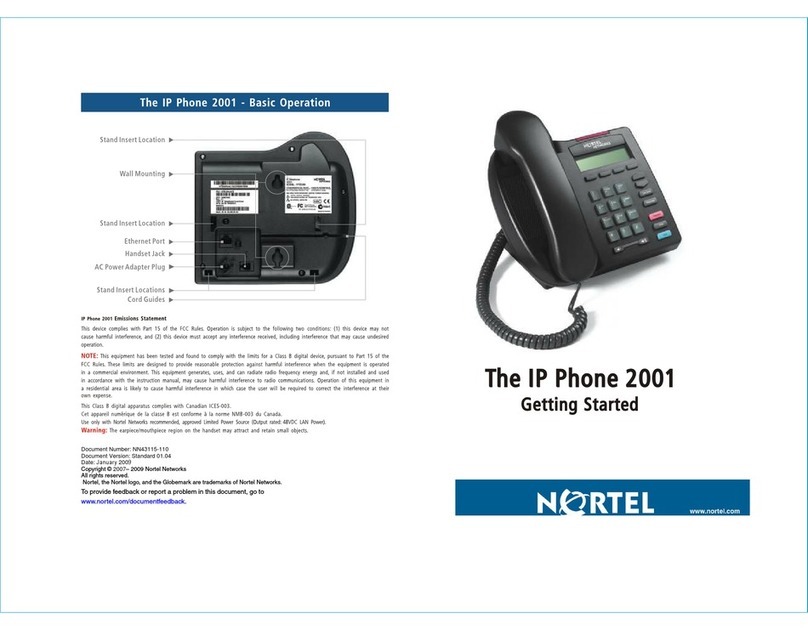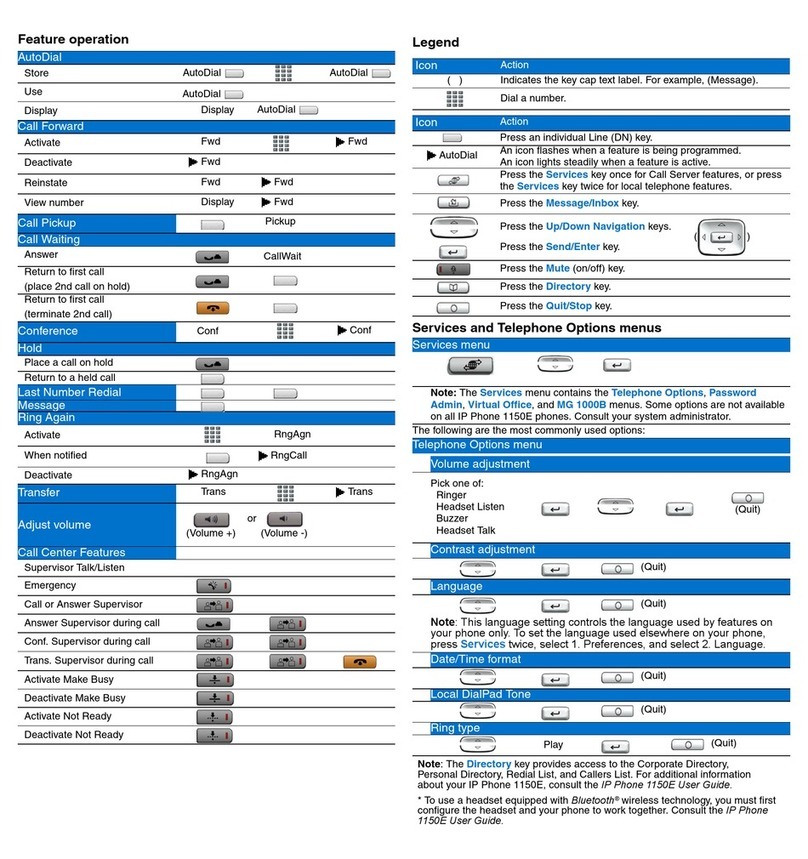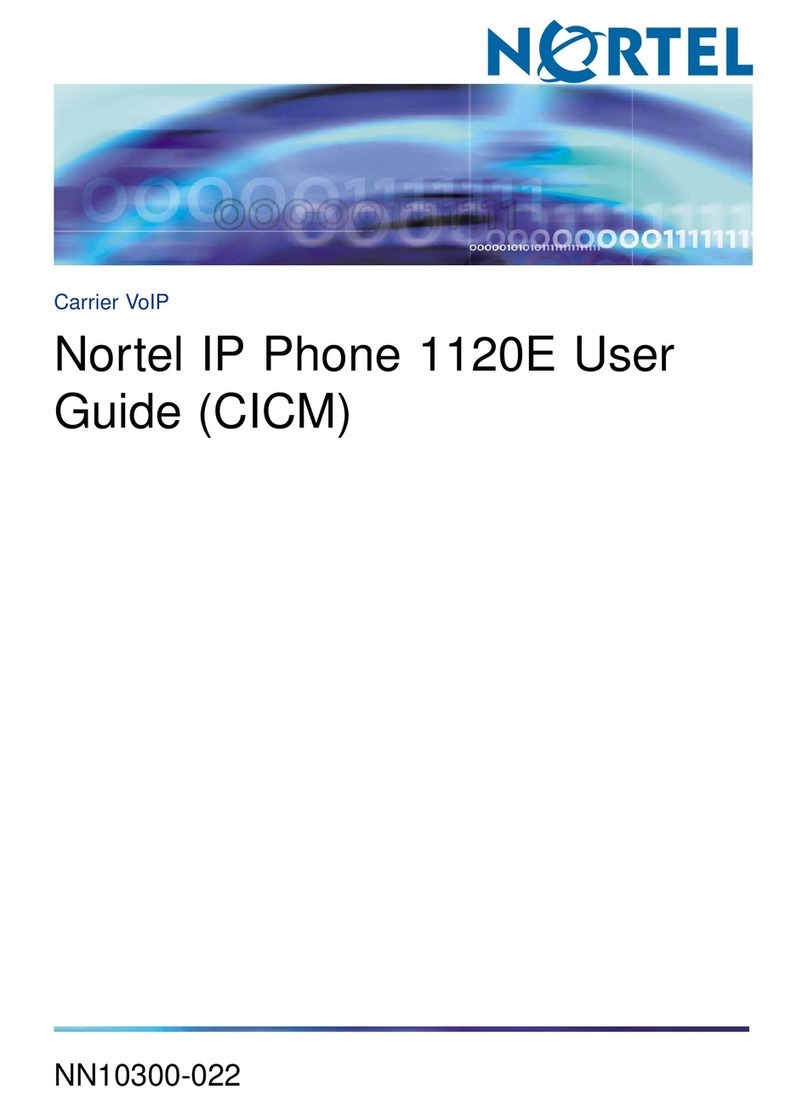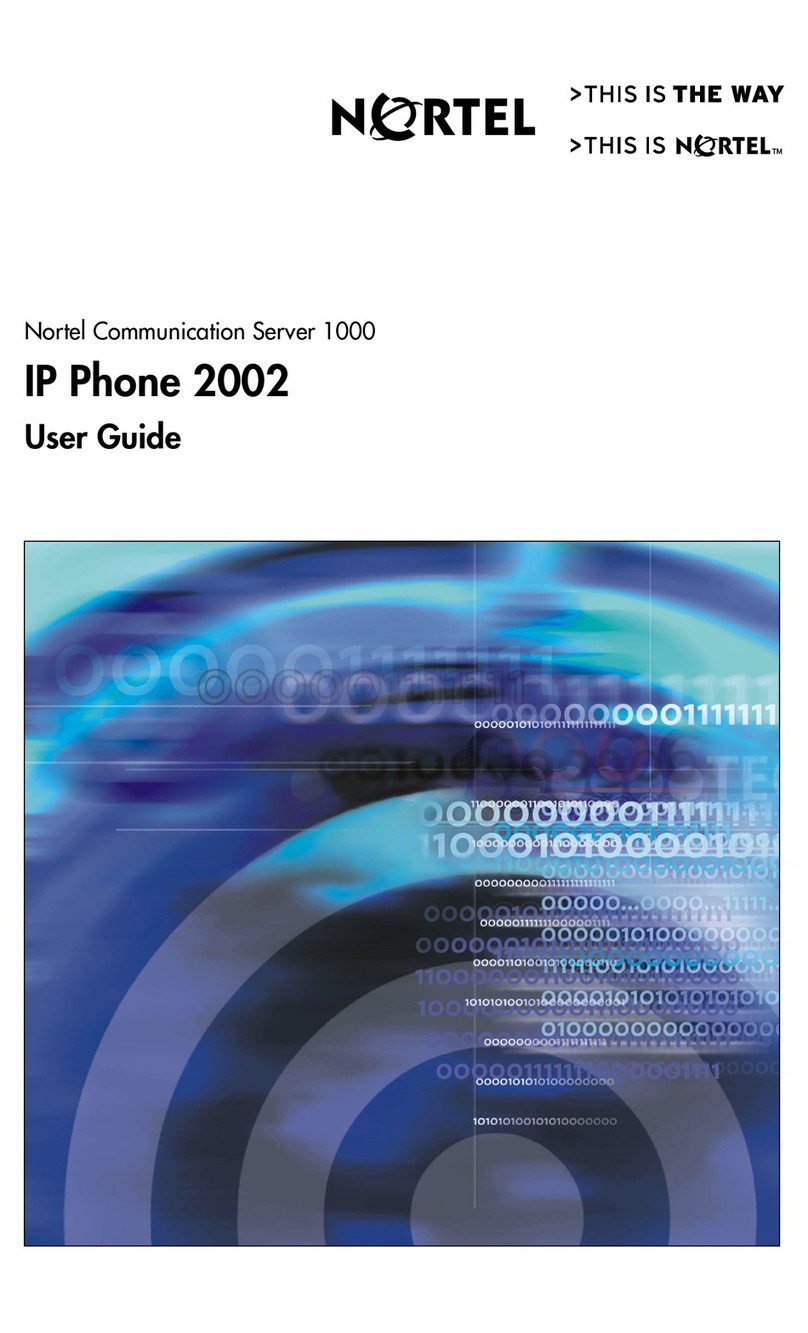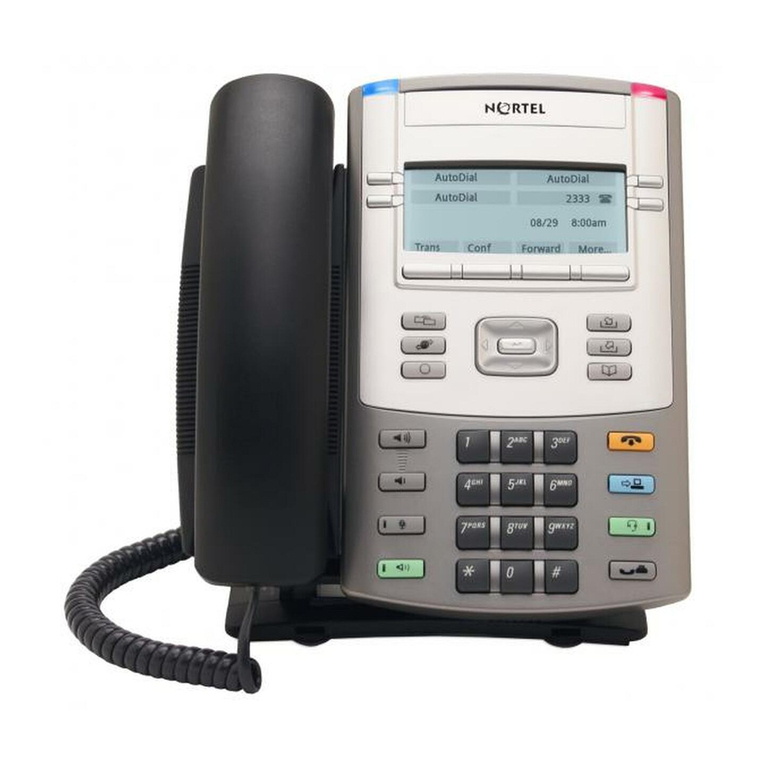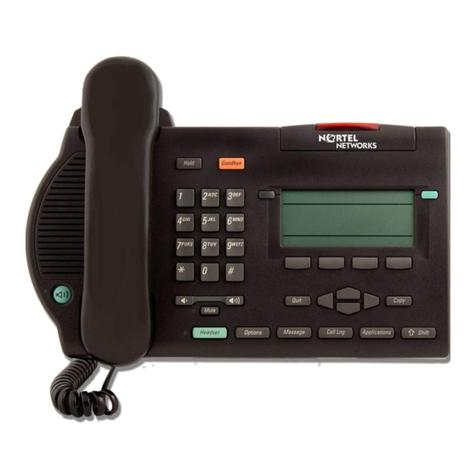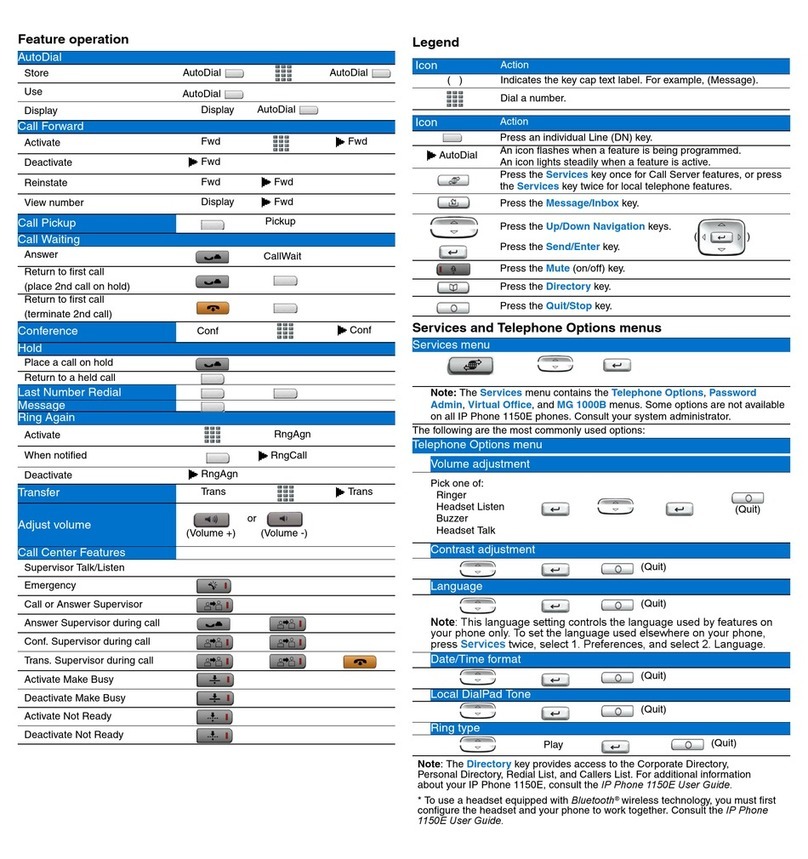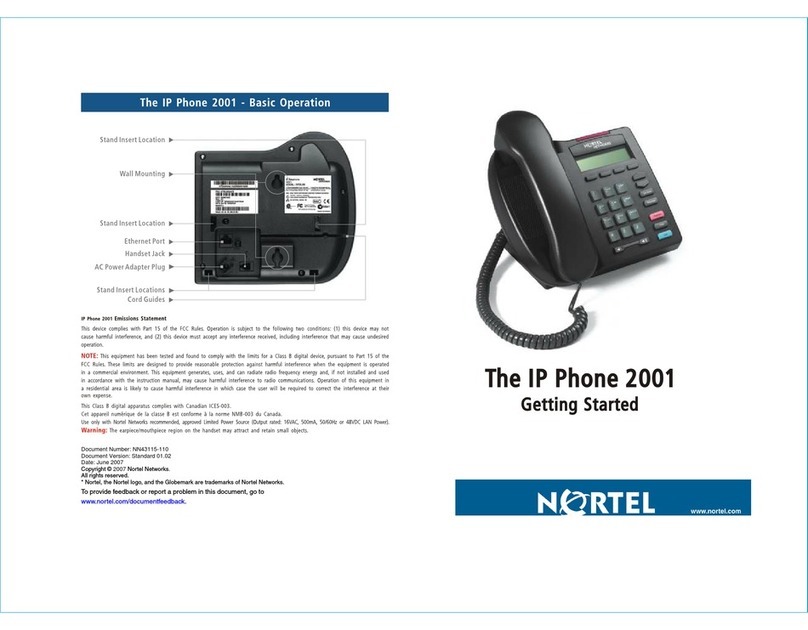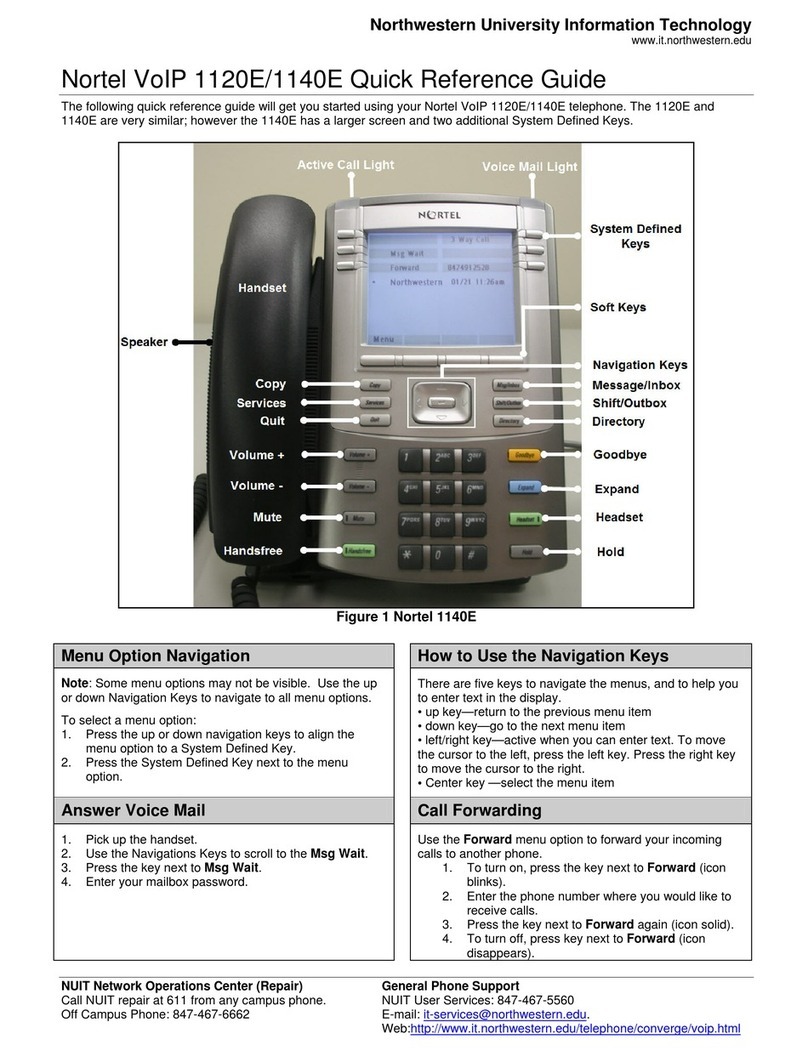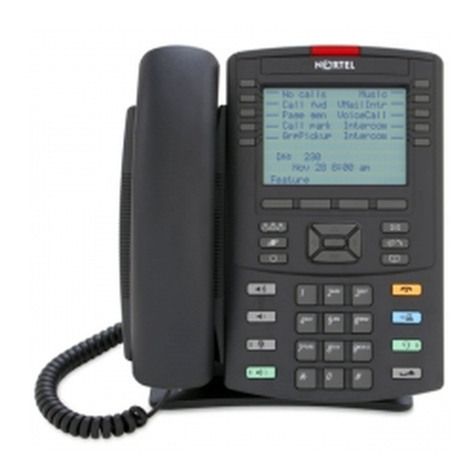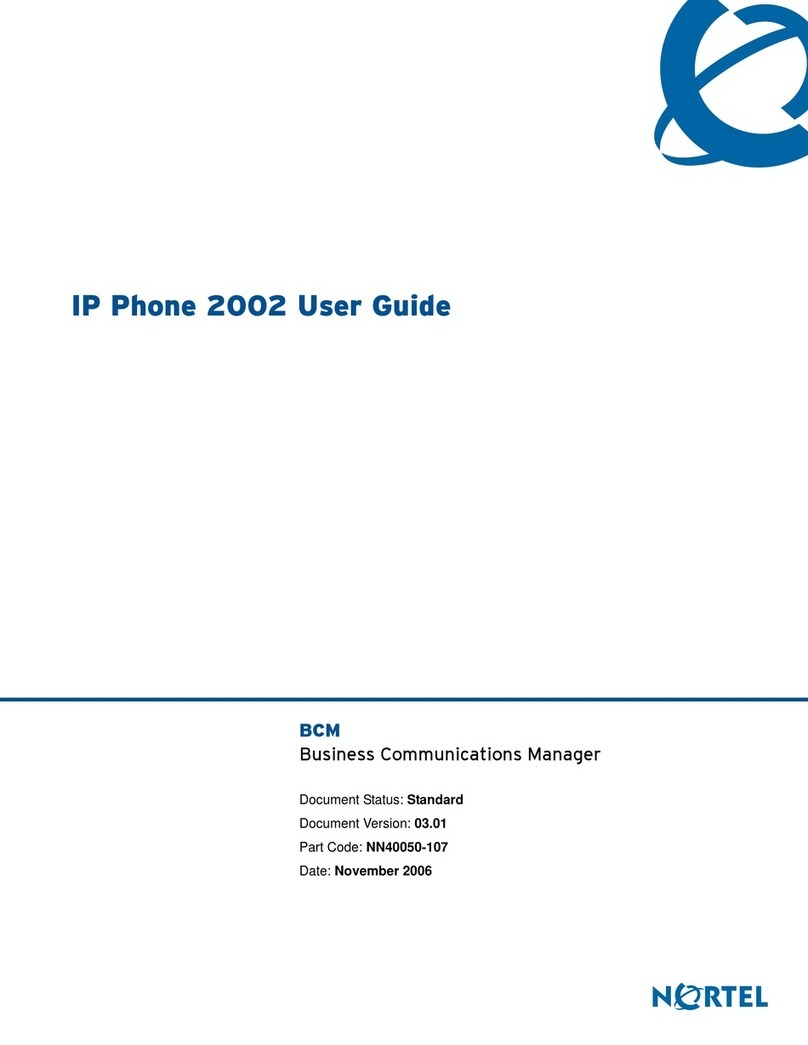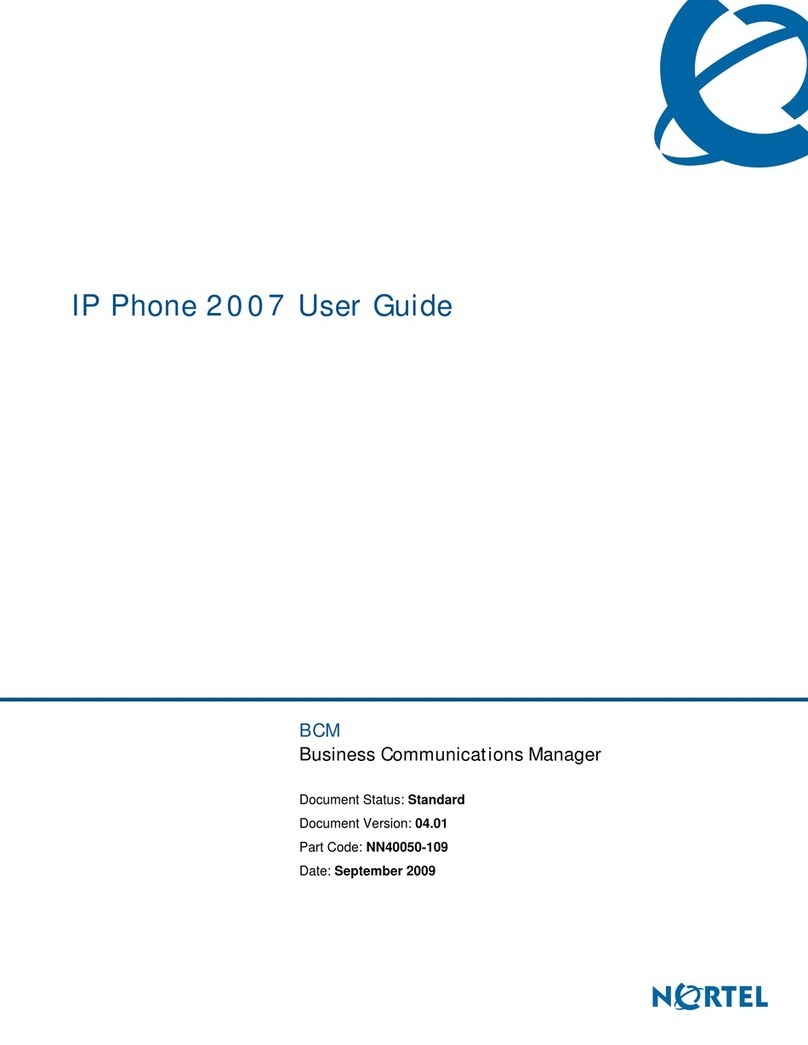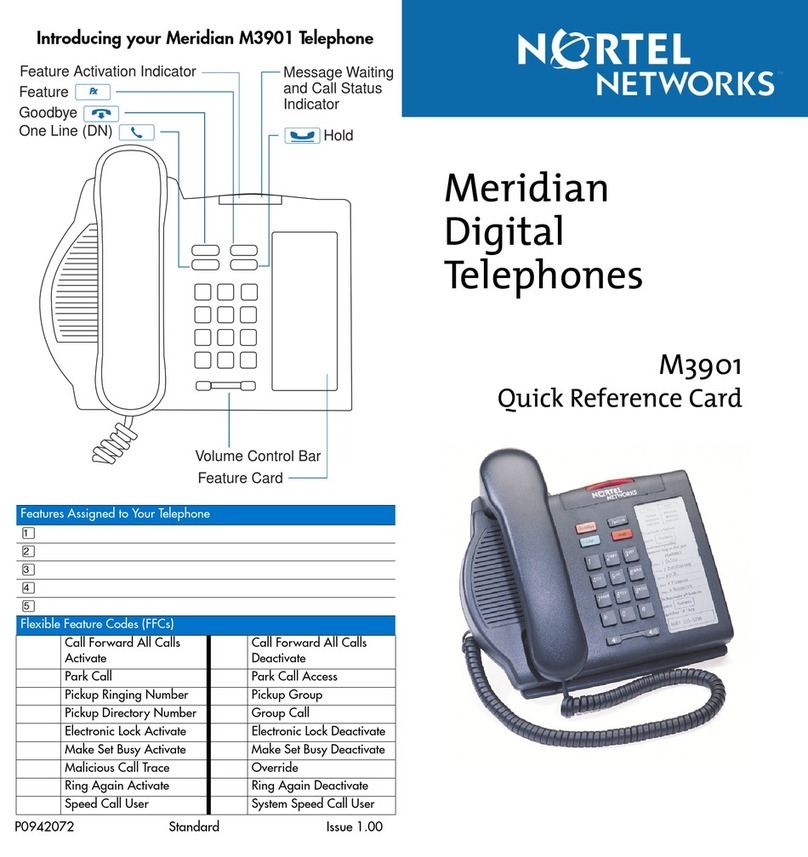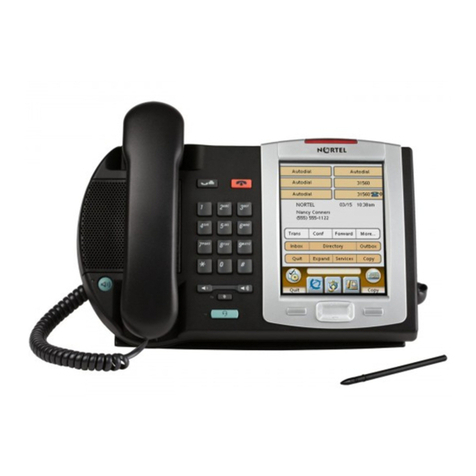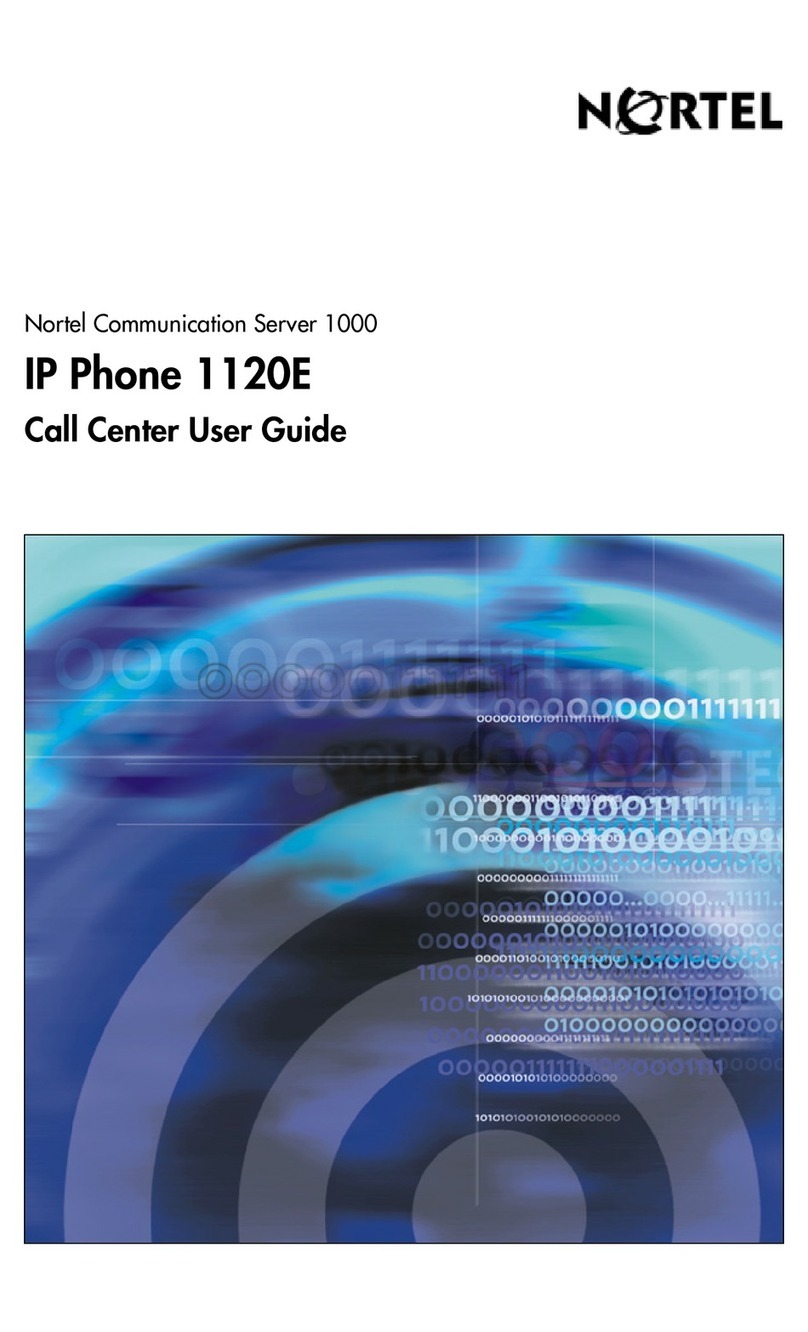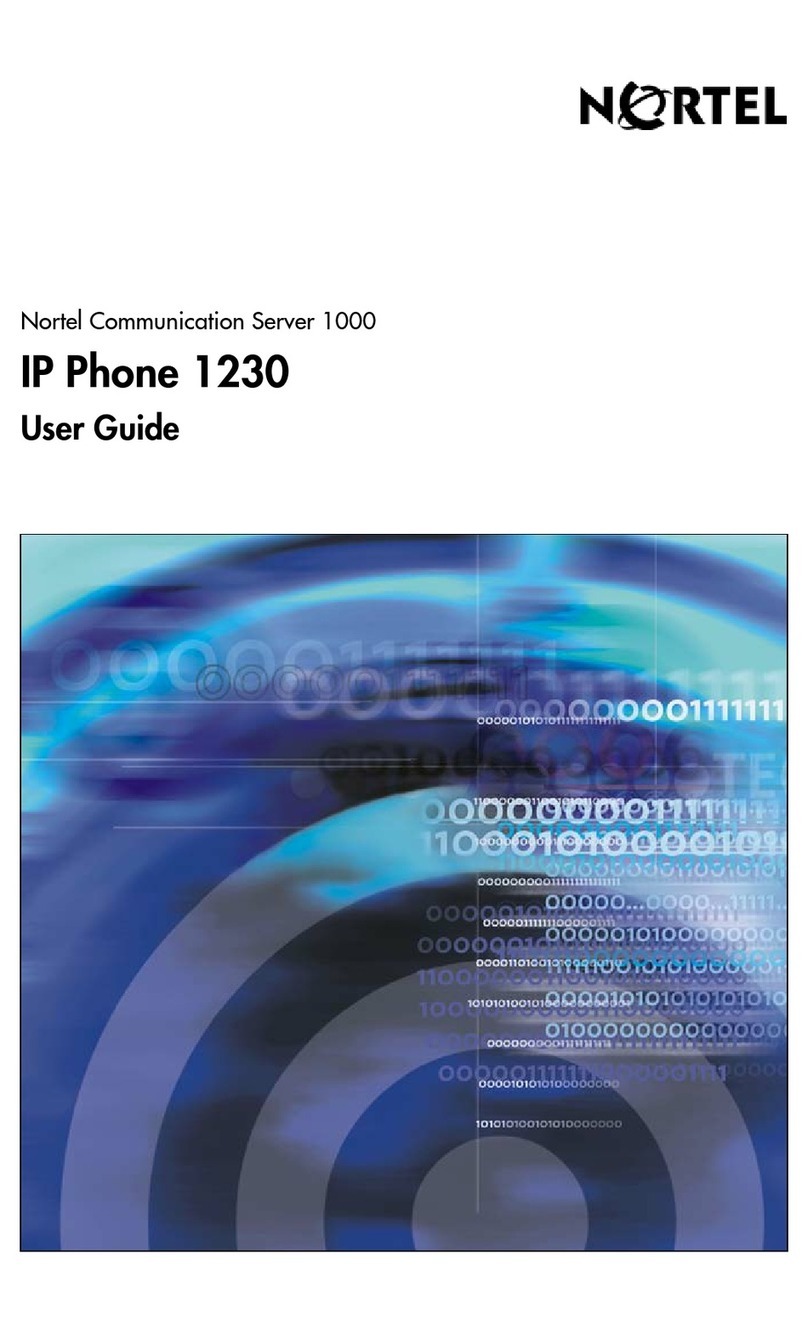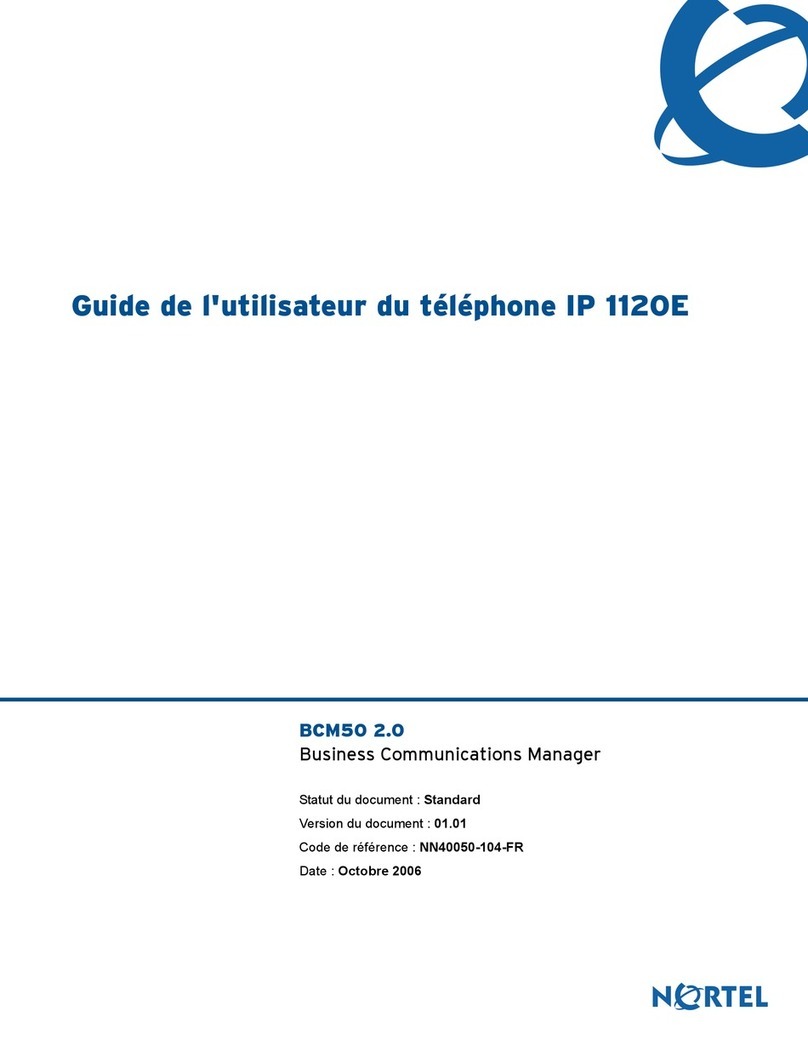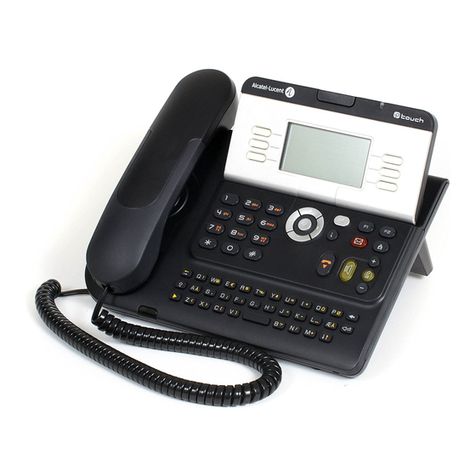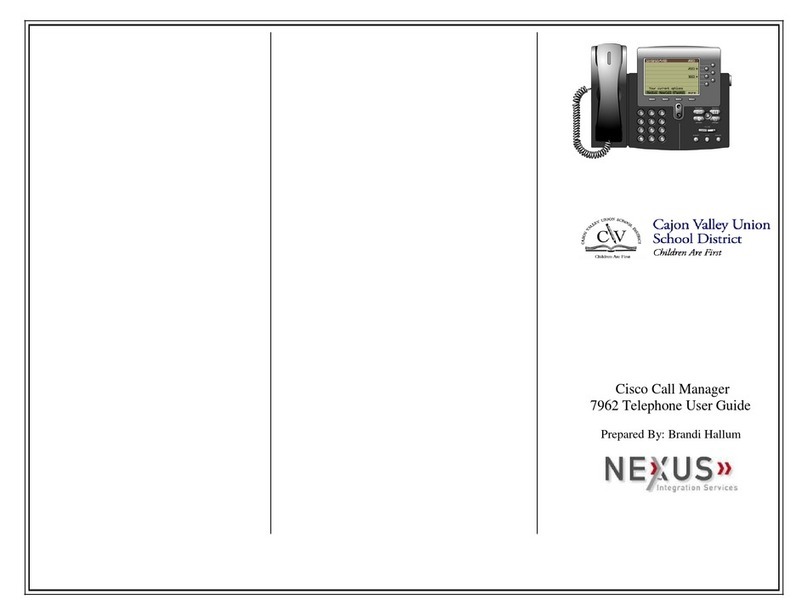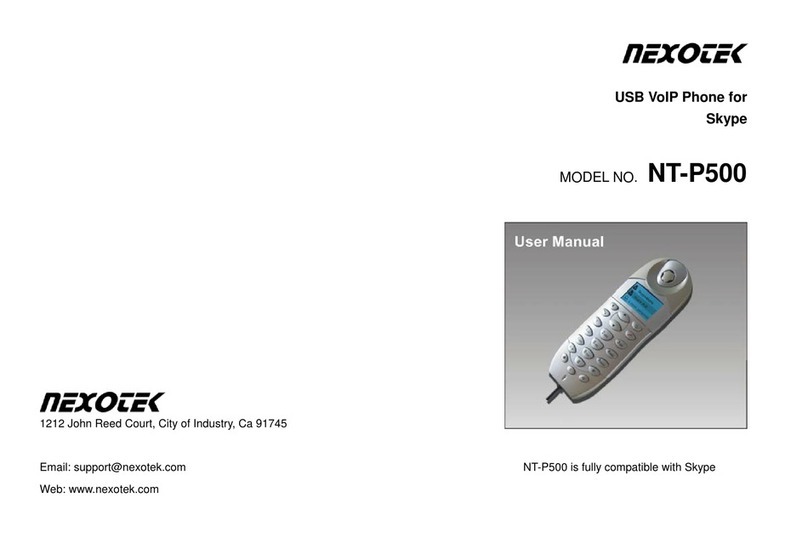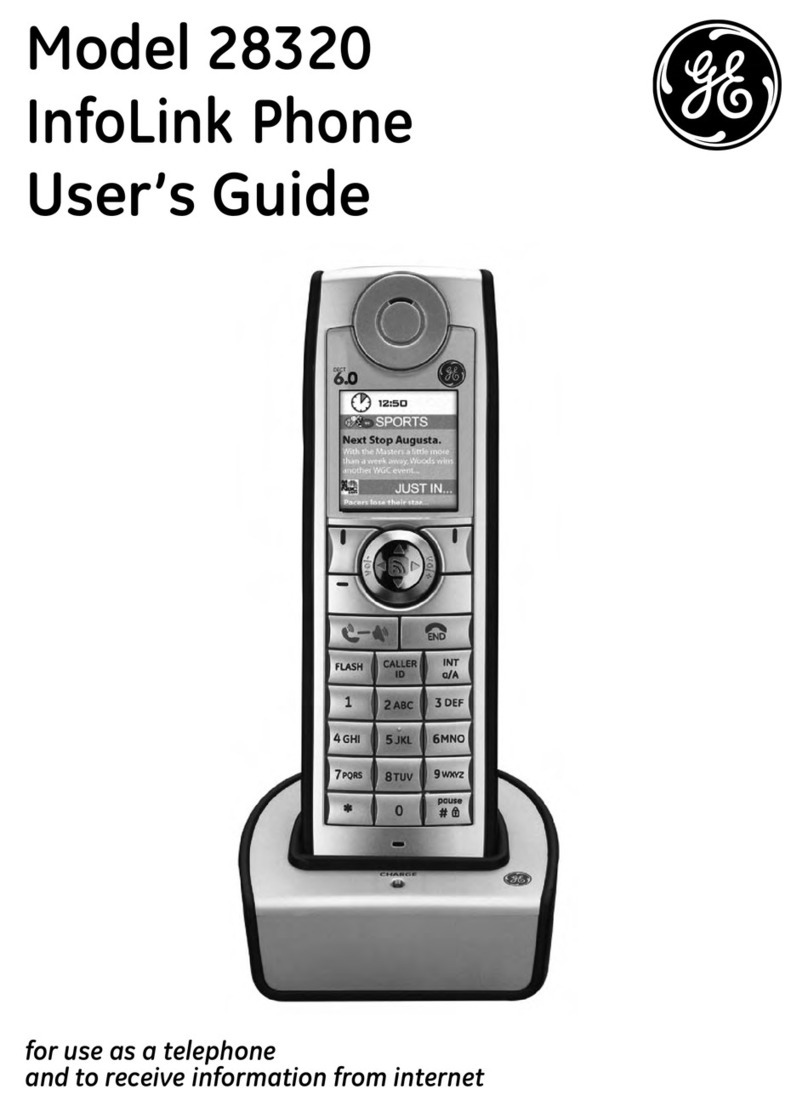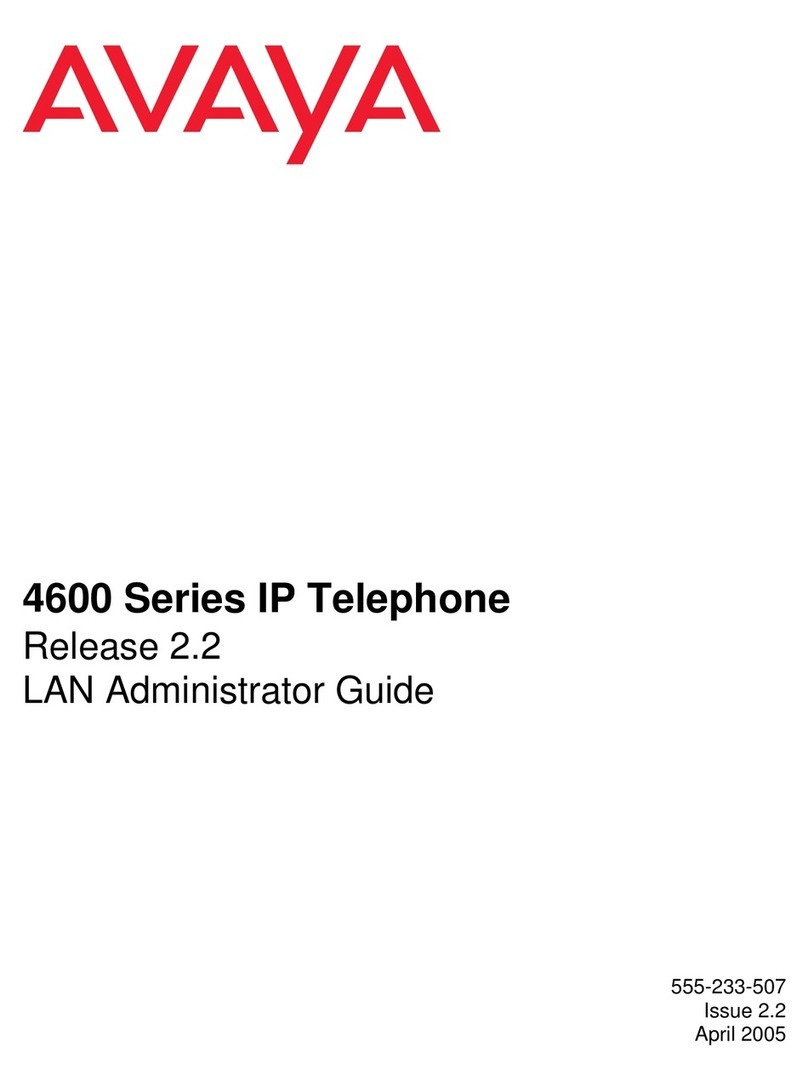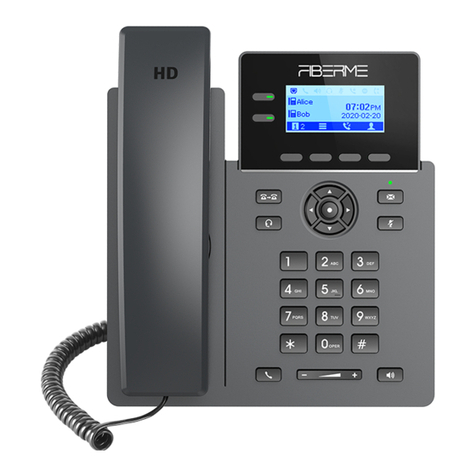
Introduction
This booklet is an end-user guide to using Nortel Networks1i2002, i2004, and 1120/1140 VOIP
telephone sets with an Asterisk-based PBX2. It is not an engineering or configuration document; these
are provided by Nortel Networks and by the Asterisk PBX community.
Asterisk (see http://asterisk.org/) is a fantastic invention, and the leading example of a new category of
PBX or telephone system, called an “open source PBX”. It was developed partly in reaction to the
previous generation of “proprietary” PBX systems (including the ones from Nortel!) which gave the
telephone system vendors all the power and the users none. Want voice mail? Pay extra. Want this or
that feature? Pay extra. Want this other feature? Sorry, not available at any price. How frustrating it
was! Asterisk is at the other extreme: you can make Asterisk do almost anything because, as its
inventor Mark Spencer puts it, “It's only software!” Asterisk is implemented as an (impressive)
software package that runs on ordinary server or desktop computers, so you don't have to buy an
expensive telephone system to run it on. Asterisk is open source, so your administrator (or a software
developer working for them) can modify it in any way they want. There are dozens of free and
commercial add-ons for Asterisk.
You may have heard the term VOIP, standing for Voice Over IP. Some people think of commercial
services like Skype®or Vonage®when they hear the term, but VOIP is much older than these
services, and much more than them. At heart, VOIP simply means that voice data is being sent over a
TCP/IP network. People have been doing this on the Internet for over twenty years and, in fact, much
of the traditional home and business telephone traffic in western countries is already carried on private
TCP/IP networks set up by the traditional telephone companies. Voice over IP is just so much easier
than using the older technologies it replaces!
Most of the VOIP telephones used with Asterisk use the “SIP” network communications language or
“protocol”. SIP (Session Initiation Protocol) is a publicly-documented protocol, and there are dozens of
handsets that use SIP. The Nortel Telephone sets documented here do not understand SIP (although it
is available as an option for some models, their use with SIP is not included in this manual). These
phone sets were designed to work with proprietary Nortel telephone systems such as “BCM” (Business
Communications Manager) and “Succession”. Perhaps you're reading this book because your system is
being migrated from one of those to Asterisk. In these systems, network communication is handled
using a protocol named “UNISTIM”, or Universal IP Stimulus. UNISTIM was invented by Nortel and
is not publicly documented. This means that somebody had to figure out how UNISTIM works. That
somebody is Cedric Hans, and the program he wrote is called “chan_unistim”. This program is free
and open source like Asterisk itself; in fact, in 2007 it became a part of Asterisk (versions 1.6 and
higher). This book presumes that your administrator has already taken care of making sure that
chan_unistim is installed and configured in your Asterisk system.
This lack of protocol documentation also means that some of the features you may be used to are not
1 Nortel Networks was previously called Northern Telecom, and before that it was called Northern Electric, back when
they made rotary telephones as a Canadian subsidiary of Western Electric, part of AT&T. Nortel rose to fame and power
during the Internet boom, and fell with it during the crash, losing a lot of shareholders a lot of money. But through it all,
they kept designing and making good telephone sets, like the ones described here. Many of the terms in this book are
trademarks or claimed trademarks of Nortel Networks Inc.
2 PBX stands for Private Branch Exchange; I'll use the term to mean any in-house (or in-company) telephone system.
3 Asterisk Unistim Revised 2008-03-07

